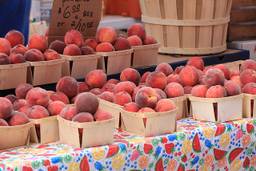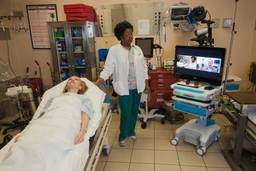Trump's Online SNAP Program Helps Amazon and Walmart, But Leaves Rural People Behind
The government’s online food assistance program doesn’t include independent grocers and ignores the gaps in rural infrastructure.
Bryce Oates and Debbie Weingarten
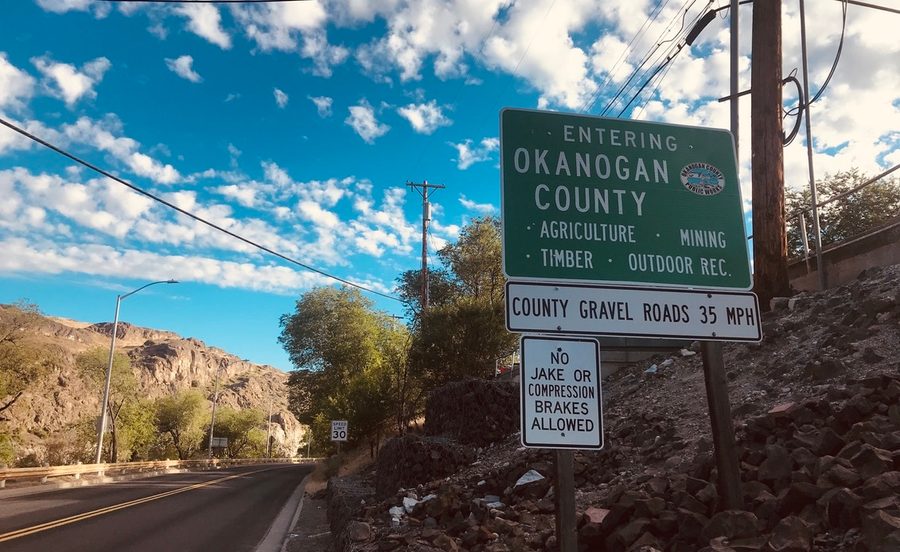
After 33 years in Okanogan County, Wash., there is nowhere else Lael Duncan would want to be — considering the Okanogan River, which churns with salmon in the fall; the rare mix of forest and highland desert; and the jagged peaks of the North Cascades Mountains, often referred to as the Alps of North America. Approximately 250 miles northeast of Seattle, the sprawling county is home to slightly more than 40,000 residents — which, as Duncan notes with a laugh, works out to about 7 or 8 square miles per person. The county also has a 17% poverty rate.
Poverty looks and feels different in a rural community. Much of rural America has no public transportation and residents may live miles away from basic services (such as gas stations and grocery stores), and the pervasive lack of high-speed internet often renders technological solutions irrelevant.
And yet, according to Duncan, executive director of the 56-year-old anti-poverty group Okanogan County Community Action Council, policy to reduce poverty is often written just for urban areas.
“This has been one of the horses I’ve ridden for a long time, in terms of saying, ‘Well, that’s a really great idea for you in Washington, D.C., or Seattle, but you’re not from around here, are you?’” Duncan laughs, but then grows serious. “I get very frustrated with policies that are designed in an ivory tower.”
One of those initiatives with seemingly little accessibility for rural Americans may be the fledgling Online Purchasing Pilot of the Supplemental Nutrition Assistance Program (SNAP, formerly known as food stamps). Theoretically, online SNAP allows benefit recipients to buy groceries on the internet.
The U.S. Department of Agriculture (USDA) has featured the rapid deployment of online SNAP as a core component of its Covid-19 response, claiming the program will serve states that are, as a group, “home to more than 97% of SNAP participants,” according to an August email from the USDA’s Food and Nutrition Service (FNS). In January, online SNAP had two states participating. Since the start of the pandemic, it has grown to 46 and the District of Columbia.
Washington — as the second state in the program and one of the earliest to feel the impact of Covid-19 — offers a useful look at online SNAP’s potential and shortcomings in rural communities.
An In These Times investigation finds that many rural residents say online grocery ordering and delivery is fundamentally at odds with their cultural, physical and technological realities. Instead, the program is almost entirely to the benefit of retail giants — leaving out independent grocers — and ignores the gaps in rural infrastructure.
Leaving Independent Stores Behind
The use of SNAP, the nation’s largest food and nutrition assistance program, has shot up in the fallout from the pandemic. Nationally, the number of SNAP recipients has grown to more than 43 million people, an increase of 6 million since March. SNAP recipients receive a monthly allowance — determined by a sliding scale based on income and family size — which can be spent on food by swiping debit-like EBT cards (short for “electronic benefits transfer”) at grocery stores and other retailers.
SNAP rules and funding are determined by the Farm Bill, debated in Congress every five or six years. The 2014 Farm Bill included a mandate, sought by nutrition advocates, to “test the feasibility and implications of allowing retail food stores to accept SNAP benefits through online transactions.” This legislation marks the beginning of the online SNAP program.
The concept of online SNAP is simple: Let poor people buy groceries online and either pick them up or get them delivered. During a pandemic, the program could be especially useful to limit social contact.
The nationwide rollout of the pilot program was slow, beginning with New York in April 2019 and expanding to Washington in January. But this spring, as the coronavirus and corresponding economic collapse deepened, the list of participating states grew rapidly.
Absent from the online pilot, however, are the thousands of small and independent grocers that have been feeding low-income rural Americans for decades.
Phil Blackburn opened his grocery store in 2018 in the 2,500-person town of Okanogan, the seat of Okanogan County, Wash., replacing the supermarket that closed nearly a dozen years prior. Blackburn refurbished and reopened the store in a rural food desert, defined by the USDA as a low-income, low-access census tract where one-third of the population lives at least 10 miles from a grocery.
Today, Blackburn owns four grocery stores across rural Washington, as well as a laundromat and a Subway sandwich shop. “It’s independents for the most part that serve rural towns,” Blackburn says.
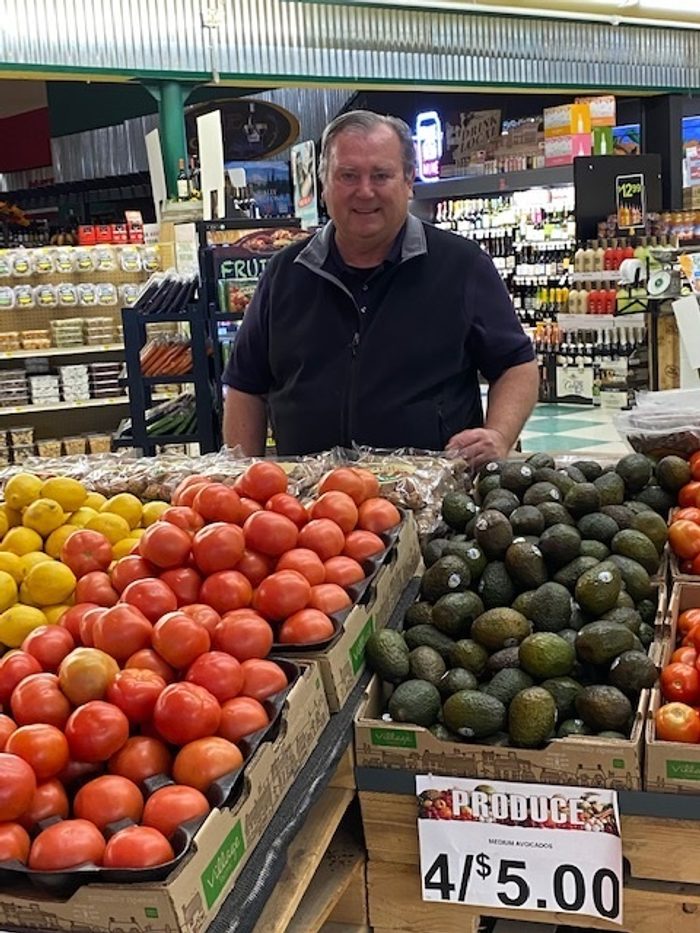
Pair that with the fact that rural communities have higher proportions of SNAP recipients than urban or suburban areas, and the interdependence between SNAP and rural grocers becomes clear. According to the Food Research and Action Center (FRAC), rural people are 25% more likely than their urban counterparts to participate in SNAP. Nationally, participation is highest among households in rural counties (16%), compared with households in metro counties (13%), based on data from the Census Bureau’s American Community Survey data from 2011-2015. Blackburn estimates that 16% of his Okanogan store sales are made with SNAP benefits.
“The large national chains don’t want to go into a rural community,” says Jan Gee, CEO and president of the Washington Food Industry Association (WFIA), which represents 87% of the independent grocers in the state. She says it’s primarily independent grocers who serve rural Washington.
This pattern holds nationally, according to the USDA’s Economic Research Service: “Studies find that areas with a high share of low-income households, as well as rural areas, tend to have more independent food retailers; relatively few chain stores operate in these areas.”
In her role at WFIA, Gee has worked since March to bring pandemic information to grocers through weekly webinars. She’s also a loud voice advocating for independent grocers to be able to participate as retailers in online SNAP, which she says has been “pretty much dominated” by Amazon and Walmart.
While eight retailers were originally approved by the USDA, only five were participating as of August. Of the 46 states now enrolled, Amazon and Walmart are the only retailers approved by the USDA in all but seven.
Gee knows of only two WFIA members who are wading through the application process with the USDA right now, a process she describes as “difficult and lengthy” with countless barriers. “It takes a very, very long time with [USDA] to even process the form to get the retailer into the system,” Gee says. “They’ve been used to working with Amazon or Walmart.”
Blackburn, who serves as the WFIA board chair, says he looked into the online SNAP application process and couldn’t believe how complicated it was. “I looked at it, and I go, you know, we’re not gonna do that,” he says. “I mean, they’ve just got too many barriers.”
In order to be approved for the online pilot, Blackburn estimates a cost of several thousand dollars per store. It requires a new tech setup and a new contract with yet another private vendor, Fiserv, a financial services corporation with a monopoly on the online processing of SNAP benefit cards. While many rural grocers have seen an increase in sales during the pandemic, the past six months have required significant spending on mandated masks, cart wipes and sneeze guards. To add another cost would be tough.
USDA’s FNS “supports the expansion of the SNAP Online Purchasing Pilot and is working with all retailers interested in participating,” according to a USDA spokesperson.
“Implementing online purchasing in SNAP requires collaboration between state agencies, their third-party processors and retailers that wish to participate,” an FNS representative explained to In These Times via email. “FNS provides significant technical assistance and customer service to all of these stakeholders based on their specific needs to support successful implementation. Retailer participation in the SNAP online purchasing pilot is a business decision made by interested retailers.”
In response to questions from In These Times, FNS said it does not track the individual budgetary impact of the Online Purchasing Pilot.
In the case of online SNAP, the USDA’s decision to contract almost exclusively with Amazon and Walmart is a clear example of government policy tilting the playing field, says Stacy Mitchell, co-director of the Institute for Local Self-Reliance (ILSR), a national research and advocacy organization that supports local economies and corporate accountability.
“This is among a whole bunch of ways in which [the] government has anointed Walmart and Amazon as winners, to the detriment of smaller competing businesses,” Mitchell says. “We’ve just seen incredible consolidation in the retail part of the food system. And I think it actually gets overlooked even by people who work on food system issues.”
While much of the criticism of food monopolies have focused on processors, the retailers “are actually more of the driving force,” Mitchell adds.
In a 2019 ILSR report, Mitchell documented Walmart’s immense grocery market share, having captured more than 50% of grocery sales in 43 metropolitan areas and 160 smaller markets. In 38 regions, Walmart’s share of the grocery market is 70% or more. “Walmart’s near-total market control gives it extraordinary power to decide which foods and brands are available locally and thus to shape what people buy and eat,” according to the report.
Walmart controls the largest share (30%) of the online grocery market, and Amazon follows closely behind with 27.1%, according to an August study from TABS Analytics.
Corporate consolidation through the food chain has resulted in farmers and food producers getting less of the consumer food dollar, while customers are paying more, according to ILSR. At the same time, Mitchell says, “a small number of dominant companies in the middle [are] walking off with a bigger and bigger chunk of that dollar.”
To try and combat such dominance, Jan Gee has brought the voice of independents to national USDA calls, as well as to statewide meetings hosted by Babs Roberts, director of the Community Services Division for Washington’s Department of Social and Health Services (DSHS), the agency that administers SNAP in the state.
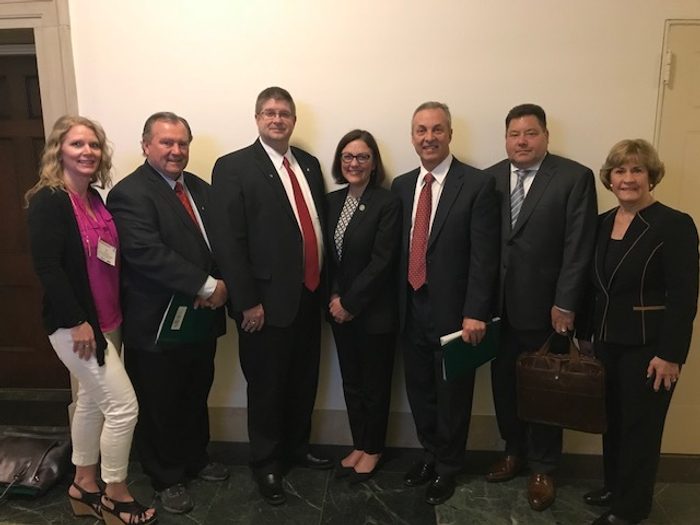
This spring, as the coronavirus pandemic began to take hold around the country, Roberts watched the application numbers climb: In the first week in April alone, Roberts says her office saw 17,000 new SNAP applications.
“For context,” Roberts says, “that’s double the highest month we saw during the Great Recession.”
Roberts says she understands independent grocers want to be included in online SNAP. “I think that their primary concern is that, if [the pandemic] lasts longer and online shopping is the way that people are going to end up using their benefits, they need a piece of that action,” Roberts says. “They need to be able to participate in that process.”
Roberts also says her hands are tied. “The state doesn’t have the authority to add retailers to the pilot… as much as we might want to. And we haven’t heard anything yet that would indicate USDA is opening it up to more retailers.”
Hurdles to Rural Grocery Delivery
Even if online SNAP were available to more rural grocers, it may not be the best way to reach rural individuals.
Before online SNAP was widely available, orders and deliveries were rarely available in rural food deserts, according to a paper published in December 2019 by the Journal of the American Medical Association. Dr. Eric Brandt, now a clinical lecturer for the division of cardiovascular medicine at the University of Michigan Medical School, found that, of 59 census tracts in eight of the pilot states (including Washington), “no census tracts were fully deliverable, 18 census tracts (30.5%) were partially deliverable, and 41 census tracts (69.5%) were not deliverable.” Notably, Amazon and Walmart’s grocery services do not deliver to all ZIP codes.
“I was worried that [online SNAP] isn’t a cure-all, particularly because I imagine that rural America does not have a lot of grocery delivery networks,” Brandt tells In These Times.
While Brandt is a vocal supporter of online SNAP, he worries that, without addressing delivery gaps, rural-urban health disparities could increase. As the program expands, Brandt says, “We should think about how we can adapt [online SNAP] to serve everybody, if possible, particularly the vulnerable, which in this case are those in more rural areas.”
More generally, online sales systems are not popular among rural grocers. When David Procter, the former director of Kansas State University’s Rural Grocery Initiative, surveyed his network of grocers about the pandemic, he asked whether they had implemented remote ordering and whether they had an online platform they were using. “Most of them say no: that what they’re doing is that they’re taking phone calls, you know, or they do it via Facebook,” Procter says, rather than a formalized ordering process.
Blackburn implemented an online marketplace for his stores two or three years ago, based on predictions that online shopping would take off in popularity. “It’s quite an ordeal,” Blackburn says. Now, online orders account for only about 1.5% of his sales.
Other barriers to online grocery retail include outdated point-of-sale systems and lack of broadband internet in many rural communities. For many rural communities, online shopping is simply not possible.
As the interim director of Room One, a health and social services nonprofit based in Twisp, Wash., 200 miles from Seattle, Kelly Edwards says the need for food, housing and childcare is higher than ever amid the pandemic downturn.
A fiber internet line runs the nine miles between the towns of Twisp and Winthrop, but it costs an average of nearly $8,000 per premise to install, plus a monthly fee to use it. The other option is wireless broadband, which depends on the location and availability of cell towers, and forested or mountainous areas can still have trouble reaching it. In more remote areas of the valley, internet access isn’t available at all.
When the Covid-19 shutdown began in March, Room One staff made the decision to remain open for appointments. Applications for public goods, such as unemployment insurance and SNAP, were moving entirely online — a logistical barrier for Room One’s many clients who do not have phone, computer or internet access. With schools and libraries closed, Room One had the only two public computers in the entire Methow Valley, a more than 80-mile rural stretch home to 6,000 full-time residents.
Like many of the rural Washington residents In These Times interviewed for this story, Edwards had not heard of online SNAP. While smartphones may largely be ubiquitous in urban or suburban centers, Edwards says, “We just don’t see that here… folks living at the poverty line and lower, you just can’t afford a monthly phone plan. You don’t keep your phone with a data plan going… and you definitely don’t have a computer at home.”
With online SNAP unavailable in the region, Room One expects to continue providing grocery cards and cash assistance to people locked out of the benefits application process.
Other Okanogan County residents do have enough internet access to use online SNAP, but describe a frustrating process and say it’s not a good fit in terms of selection.
Baya Walls lives in the town of Okanogan. Recently, after Washington increased its SNAP allowances, Walls realized they could use their EBT card for Amazon delivery and Walmart curbside pickup — but they haven’t done much grocery shopping through Amazon, as perishable items aren’t available for delivery in their area. Additionally, they’ve found that many of their favorite herbs or shelf-stable ingredients aren’t eligible for online purchase. Walls prefers to shop at their local grocery store and personally select items.
Walls has, however, used their benefit card for curbside pickup at the Omak Walmart, which requires a minimum order of $35. While Walls describes themself as “somewhat computer savvy,” they say Walmart’s identity verification process was “difficult” and “frustrating,” requiring multiple different entries of personal identification numbers.
Walls also spent hours setting up a Walmart SNAP account on a smartphone for a friend who is in her 60s and does not own a car. Technology is “a big barrier for the older generation, and that gets lost in the shuffle,” Walls says, adding that there can also be cultural beliefs about online shopping being less safe. “I have one other older friend, and she doesn’t trust the internet,” Walls says. “She refuses to do any online shopping, because she’s very afraid of fraud.”
While Walls, who is 52 and was forced to retire early due to medical problems, does worry about online security, they say, “The fact that I can use my EBT benefits online is something that makes life a little easier for me. Do I worry about the safety of my information? Yes, I do… but it’s the risk that I’m taking for the sake of convenience.”
Online privacy and security researchers have raised similar concerns, specifically about online SNAP. “I think there’s enough information that suggests that the distrust is warranted,” says Katharina Kopp, deputy director and director for policy at the Center for Digital Democracy (CDD).
SNAP has come a long way from the days of paper food stamps, counted and exchanged at a cash register. Now, benefits cards are swiped just like debit cards, an experience far less stigmatizing for users. A shift to online SNAP offers even more discretion and convenience — but Kopp and her colleagues argue there is a cost.
“People who need government food assistance should be given access to the same kinds of online services that others in our country are using to feed their families without having to increase their risks of becoming ill,” according to the CDD report, “Does Buying Groceries Online Put SNAP Participants At Risk?”, which Kopp co-authored. “The SNAP online purchasing program could be a vital tool for achieving that goal.”
But the report cautions SNAP recipients may face “increased data collection and surveillance, a flood of intrusive and manipulative online marketing techniques, and pervasive promotion of unhealthy foods.”
In an unregulated digital environment, Kopp is concerned that Big Data, when deployed by powerful corporations to optimize their bottom lines, has the effect of actually exacerbating inequities. “People already at the bottom of the economic ladder, with these data practices, will tend to be classified — sorted — and are the most likely to be exploited and taken advantage of,” Kopp says.
As part of their research, Kopp and her colleagues reviewed the privacy policies and data tracking practices of the approved online SNAP retailers, including Amazon and Walmart. They found numerous failures to protect SNAP recipient data, particularly from predatory advertising tactics used by retailers, and that the USDA “relied on the flawed and misleading privacy policies of the participating companies.” Ultimately, says Kopp, the USDA has “a responsibility to create a safe environment” before encouraging people to go online.
“We know that people care about how their information is used and shared,” Kristina Herrmann, Amazon’s director of underserved populations, writes in an email to In These Times. “We also know that people won’t want to do business with us if they don’t trust us to handle their information carefully and sensibly. Amazon complies with applicable law on customer data and privacy notices. We only share customer information as described in our privacy notice.”
Lack of access and distrust of the system, as well as the relative newness of the program, may be contributing to online SNAP’s sluggish user uptake. Babs Roberts, in Washington, says the online SNAP program took off slowly once it became operational in January. By the end of June, only 18,500 Washington SNAP cardholders had used their benefits online, a small percentage of SNAP recipients statewide. A county-by-county breakdown of online SNAP usage is not currently available.
In part, the low participation numbers can certainly be attributed to the infancy of the program. But these early numbers remain lower than both Gee and Roberts had anticipated. “Some of these folks have transportation issues,” Gee says. “And a lot of them are elderly, and they don’t want to go to a store right now. It is strange to me that those numbers didn’t explode like online purchasing exploded” during the pandemic.
Nationally, according to a USDA spokesperson, “close to 35,000 households shopped online using their SNAP benefits” in March. “By comparison, in July 2020, over 940,000 households shopped online using SNAP benefits.”
Roberts says she anticipates the program will grow in popularity, given how online shopping has increased during the pandemic. “But I don’t think it’s going to get really hugely popular until we can expand the base of retailers,” she says. “There isn’t a Walmart everywhere, and Amazon isn’t delivering fresh produce or perishable items everywhere. So there are still some limitations causing some people to just go to the grocery store.”
Alternate Solutions
During a pandemic that disproportionately harms vulnerable communities, online SNAP certainly has its place. A safe and functional SNAP program that provides equity to recipients, online and in-person, is paramount to feeding millions of Americans as the economy is rebuilt.
The role of SNAP as an economic driver is well documented. “It has a multiplier effect on local economic activity,” says Aaron Shier, senior government relations representative for the National Farmers Union (NFU). “There’s more than a dollar spent for every SNAP dollar spent, and that means jobs and increased markets for farmers and the food that they sell.”
Shier says NFU is generally supportive of online SNAP and believes “it is a step in the right direction with consumers increasingly opting to shop for their groceries online.” But as an organization representing a largely rural membership, Shier adds that there are definitely barriers for online SNAP in rural communities.
“Perhaps more important than any focus on online SNAP is the need to expand benefits and funding during this time that has been so difficult for so many Americans,” Shier says.
One obvious next step could be for Congress to pass the Expanding SNAP Options Act, co-sponsored by Illinois Democratic Sens. Tammy Duckworth and Dick Durbin. The act would require the USDA to implement online SNAP purchasing in all states, provide $25 million to develop and maintain an online redemption portal for independent grocers and provide $75 million for the creation of a USDA Technical Assistance Center to facilitate online purchasing and help smaller retailers participate in the program. A companion House bill was introduced by Illinois Democratic Reps. Robin Kelly, Bobby Rush and Jesus “Chuy” Garcia, as well as New Jersey Rep. Donald Payne Jr. and D.C. Delegate Eleanor Holmes Norton as original co-sponsors. Neither bill has moved forward.
But without major investments in rural infrastructure development — such as high-speed internet — technological solutions to rural hunger and poverty are likely to fall short, as researchers continue to link better job and income performance to high-speed internet access. The other side of investing in high-speed internet is making sure it’s safe to use by passing federal privacy legislation.
While fixing the gaps in online SNAP is a given, advocates also point to the importance of increasing SNAP benefits overall.
“SNAP is a tremendous tool, and [SNAP] cards are life-saving for people,” says Room One’s Kelly Edwards. “We would 100% rather keep the money in the valley with family-owned businesses and growers,” as opposed to Amazon or Walmart, where the money leaves the community.
While the Food Research and Action Center (FRAC) supports online SNAP, and helped advocate for its creation and inclusion in the 2014 Farm Bill, “the biggies on our list are making sure people have the adequate resources for themselves, but also so that the economy gets the boost that it needs,” says FRAC’s Ellen Vollinger.
“And, this isn’t rocket science either, but the reason there’s hunger is the economic difficulties,” Vollinger adds. “It’s not [that we’re lacking] sufficient food in the country. It’s that people don’t have good economic circumstances.”
SNAP advocates, including FRAC and the National Farmers Union, have called for another round of pandemic stimulus with a 15% increase to SNAP funding and an increase in minimum monthly benefits, sought by House Democrats in the HEROES Act passed in May.
Although an expansion of SNAP benefits makes economic sense, it is likely to face significant political barriers. When the 2018 Farm Bill was being negotiated, President Donald Trump and the House Republican Freedom Caucus delayed the bill for months, attempting to enact deep SNAP cuts. Secretary of Agriculture Sonny Perdue, Vice President Mike Pence and then-House Speaker Paul Ryan (R-Wis.) all campaigned on SNAP cuts and new work requirements for the program’s recipients.
Though Trump and congressional Republicans ultimately relented and passed the Farm Bill, in December 2019 Trump signed an executive order reimposing work requirements on SNAP recipients between the ages of 18 and 49 who are childless and not disabled. These “able-bodied adults” were already required to work at least 20 hours a week to qualify for SNAP benefits, but states had previously been able to offer exceptions for recipients in areas with high unemployment rates. The USDA estimated, at the time, that 688,000 people would lose access to SNAP because of the changes, reducing SNAP spending by $5.5 billion over five years.
Trump’s USDA continues to pursue these work requirements even during the pandemic and despite judicial rulings against them — and has largely neglected to use other SNAP tools to support the pandemic response.
“It’s just stunning the degree to which USDA has not created more flexibility and adapted more tools of the program,” such as disaster SNAP, Vollinger says — as previous Republican presidents have. Disaster SNAP is part of the federal emergency response to wildfires, tornadoes, floods, hurricanes, mega-storms and other natural disasters. Although the FNS Covid-19 response includes permitting states to issue emergency allotments that would increase benefits for some existing SNAP households, disaster SNAP would allow families in federally declared disaster areas who lose a job, can’t get access to their bank funds, or lose food or housing to receive benefits when they wouldn’t otherwise be eligible.
“What has been frustrating, generally, about the administration’s approach on SNAP is the degree to which they don’t use all the tools in the toolbox,” Vollinger says.
Senate Republicans have so far refused significant SNAP expansion, though an $8 billion one-time increase in nutrition support was included in the continuing budget resolution passed in late September to avoid an October government shutdown.
Perhaps most importantly, while the resilience of rural communities is apparent, more funding and support would certainly help alleviate some of the strain.
“For all the deficits and lack of access that people will describe a rural community by, I feel like the richness and the strength is actually the community,” Edwards says. “Because we’re used to not having state or county or other support coming in, and so we have to take care of each other… we’ve come to rely on ourselves.”
This article was supported by a grant from the Leonard C. Goodman Institute for Investigative Reporting and the Economic Hardship Reporting Project. Fact-checking was provided by Maddie Cruz.

I hope you found this article important. Before you leave, I want to ask you to consider supporting our work with a donation. In These Times needs readers like you to help sustain our mission. We don’t depend on—or want—corporate advertising or deep-pocketed billionaires to fund our journalism. We’re supported by you, the reader, so we can focus on covering the issues that matter most to the progressive movement without fear or compromise.
Our work isn’t hidden behind a paywall because of people like you who support our journalism. We want to keep it that way. If you value the work we do and the movements we cover, please consider donating to In These Times.
Bryce Oates is a freelance writer covering rural policy, people, places and politics. His work includes news reporting, news features, narrative nonfiction and analysis pieces. Oates has been working on federal farm and food policy, public lands and conservation issues, climate change and economic inequality in rural America for more than 20 years.
Debbie Weingarten is a writer and editor based in Tucson, Arizona, with a background in food systems, agriculture, and community organizing. Her journalism and creative nonfiction has appeared in the New York Times, The New York Review of Books, The Guardian, the Economic Hardship Reporting Project, Guernica, and Longreads, and elsewhere. She was a finalist for the James Beard Award in Investigative Reporting.
